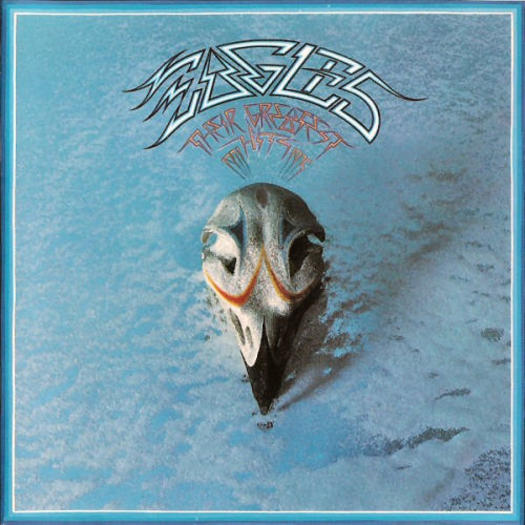
Greatest Hits 71-75 (1976)

1. Take it Easy
2. Witchy Woman
3. Lyin' Eyes
4. Already Gone
5. Desperado
6. One of These Nights
7. Tequilla Sunrise
8. Take it to the Limit
9. Peaceful Easy Feeling
10.Best of My Love
It remains one of the more quietly astonishing facts in the history of popular music that the biggest-selling album of the 20th century in the United States wasn’t by The Beatles, Elvis Presley, or even Michael Jackson. It was this one: a ten-track retrospective from a band whose career, at that point, had yet to reach its peak. Their Greatest Hits 1971–1975 is both a summation and an anomaly — a collection that neatly bookends the Eagles’ formative years, and somehow transcends its own modest ambition.
It is a concise affair — just under 44 minutes — yet manages to distill the band’s early magic with uncanny precision. Every song included had already proven itself on radio, in charts, and in hearts. These were the tracks that made the Eagles a household name long before Hotel California would cement their mythos. Yet it’s still surprising, in retrospect, that such a relatively slim body of work could yield a “greatest hits” collection so widely embraced.
At the time of release, the Eagles had only four studio albums to their name, and had existed for barely half a decade. By traditional standards, this would qualify them as rising stars, not legacy artists. Legends — one assumes — are built on longevity. But what Their Greatest Hits reveals is that, even early on, the band had mastered the art of resonance. These weren’t just songs — they were cultural artifacts, shaped as much by California sunsets as by Nashville twang, rooted in harmony and honed with precision.
There is no filler here. From Take It Easy’s breezy road wisdom to the weary ache of Desperado, every track earns its place. Lyin’ Eyes, One of These Nights, Tequila Sunrise, Best of My Love — each serves as a chapter in the band’s unfolding identity. The sequence is non-chronological, but the emotional arc is deliberate: longing, defiance, surrender, regret. And above all, that inimitable sense of melodic ease — the kind that made even heartbreak sound enviable.
Critics might argue that the compilation came too early, or that a more expansive retrospective would have made more sense just a few years later. Perhaps. But at the time, it marked the end of the band’s first act — the “country-rock” phase that would soon give way to something sharper, slicker, and darker. This was the sunset before the neon.
Broader anthologies have since followed — box sets, double discs, career-spanning retrospectives. But none have achieved the same cultural ubiquity. Their Greatest Hits 1971–1975 became more than just a compilation; it became a rite of passage, a sonic postcard from a gentler, more melodic America.
That it continues to sell, decade after decade, is less about nostalgia than about craft. These songs were not built for trends. They were built to last.
Go back to the main page
Go To Next Review